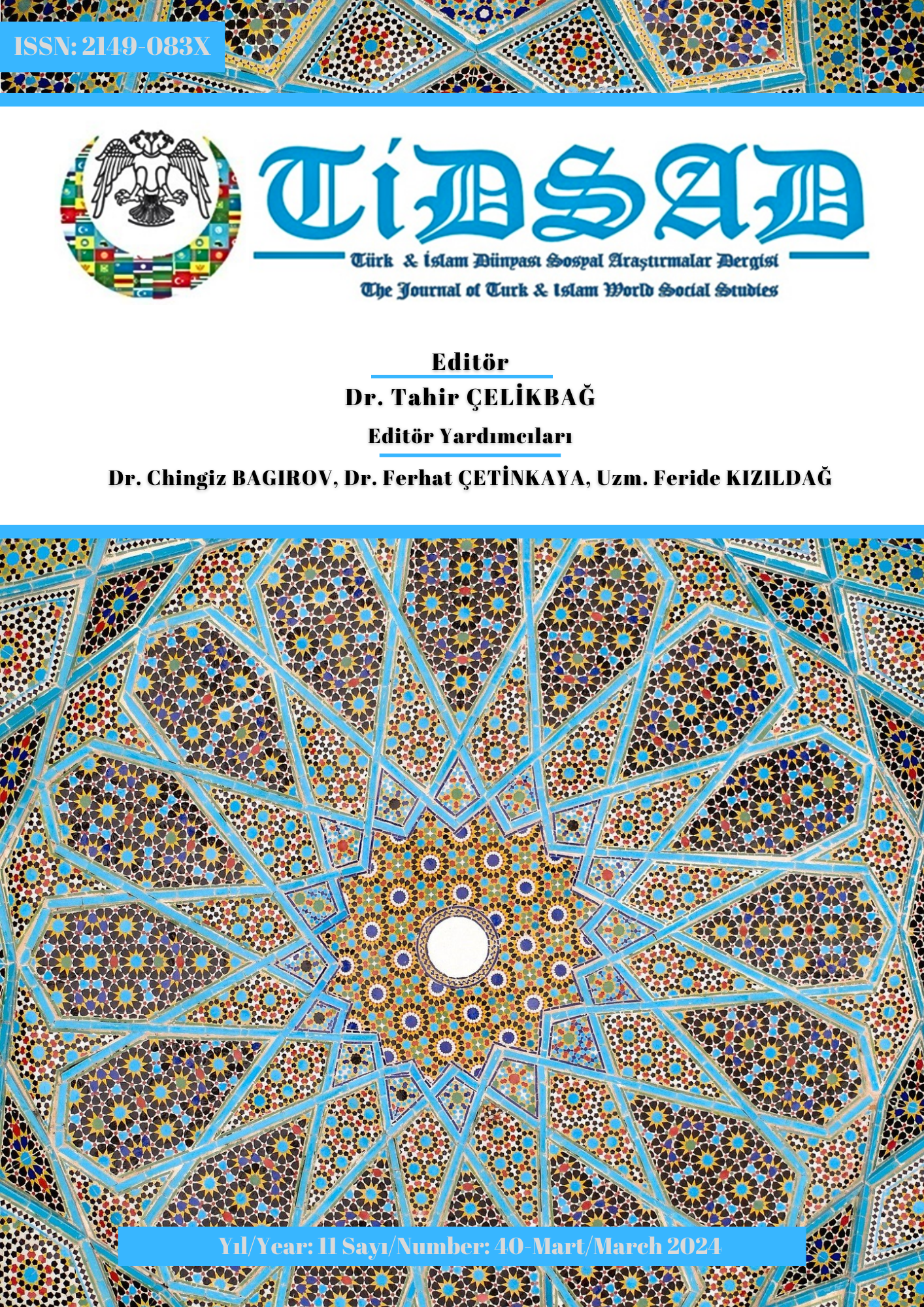Uluslararası Zorunlu Göç Kapsamında Türkiye’de İkamet Eden Yabancı Profili Verilerinin İstatistiki Analizi
Author :
Abstract
Göç olgusu bugün küreselleşen dünyanın en önemli meselelerinden biri haline gelmiştir. Birleşmiş Milletler küresel eğilim raporlarına göre yaklaşık 300 milyon insan kendi ülkesi dışında yaşamaktadır. Bu oran dünya nüfusunun yaklaşık 3,6’sına tekabül edip göçmen krizinin geldiği boyutu gözler önüne sermektedir. Şüphesiz bu göçlerin çok çeşitli sebepleri bulunmaktadır. Günümüzdeki en önemli sebep ise savaş ve çatışmalardır. Bu çatışmalara terör örgütlerinin varlığı, etnik gruplar arasındaki restleşme, siyasi istikrarsılık, ekonomik sıkıntılar, şiddetli kuraklık ve hava kirliliği gibi nedenler de eklenince zorunlu göç kaçınılmaz bir hal almaktadır. Yukarıda sayılan nedenlerle birçok insan kitlesel bir şekilde yerinden edilmiştir. Zorunlu olarak gerçekleştirilen bu göçler genel olarak az gelişmiş ülkelerden gelişmekte olan veya gelişmiş ülkelere doğru gerçekleşmektedir. Sorunların yaşandığı ülkelerin komşuları genelde göçmenlerin tercih ettiği ilk durak olmaktadır. Türkiye’de savaş ve çatışmaların en yoğun yaşandığı Ortadoğu Bölgesi’ne yakınlığı hatta komşuluğu nedeniyle bu göçlerin en yoğun yaşandığı ülkelerin başında gelmektedir. Bu makalenin amacı Türkiye’ye gelen yabancı sayısının analiz edilerek bu sayıların göç olgusuyla ilişkisinin irdelenmesidir. Bu analizin yapılması aynı zamanda ülkemize yapılan göçlerin niteliğinin anlaşılmasına da katkı sunacaktır. Bu amaçla ilk olarak Türkiye’ye yapılan giriş-çıkış sayıları ve bunların hangi ülkeler tarafından yapıldığı, ikinci olarak ikmaet izni olan yabancıların sayısı ve bu ikametlerin hangi illerde yoğunluğu, son olarak da bu ikamet izinlerinin niteliği hakkındaki veriler irdelenmiştir. Çalışmanın bilimsel niteliğinin arttırılması amacıyla ilk bölüm literatür taraması ve kavramsal çerçeveye ayrılmıştır. Bu bölümde göç olgusunun anlaşılabilmesi amacıyla kapsamlı bir literatür taraması yapılmış; yapılan tarama sonucunda göç konusuyla ilgili kavramlar incelenmiş ve çalışmanın kavramsal çerçevesi çizilmiştir. İkinci bölüm; elde edilen verilere ve bu verilerin niceliksel analizine ayrılmıştır. Sonuç kısmında ise elde edilen bütün veriler niteliksel bir analize tutulmuş ve yorumlanmıştır.
Keywords
Abstract
The phenomenon of migration has become one of the most important issues in today's globalizing world. According to United Nations global trend reports, approximately 300 million people live outside their own country. This rate corresponds to approximately 3.6 of the world's population and reveals the extent of the immigrant crisis. Undoubtedly, there are many reasons for these migrations. The most important reason today is war and conflicts. When reasons such as the existence of terrorist organizations, showdown between ethnic groups, political instability, economic difficulties, severe drought and air pollution are added to these conflicts, forced migration becomes inevitable. Many people have been massively displaced for the reasons listed above. These forced migrations generally take place from underdeveloped countries to developing or developed countries. Neighbors of countries where problems are experienced are generally the first stop preferred by immigrants. Turkey is one of the countries where these migrations occur most intensely, due to its proximity and even neighborhood to the Middle East Region, where wars and conflicts occur most intensely. The aim of this article is to analyze the number of foreigners coming to Turkey and to examine the relationship between these numbers and the phenomenon of migration. Conducting this analysis will also contribute to understanding the nature of migration to our country. For this purpose, firstly, the number of entries and exits to Turkey and the countries from which these were made, secondly, the number of foreigners with residence permits and the density of these residences in which provinces, and finally the data on the nature of these residence permits were examined. In order to increase the scientific quality of the study, the first chapter is devoted to the literature review and conceptual framework. In this section, a comprehensive literature review has been made in order to understand the phenomenon of migration; As a result of the scanning, concepts related to the issue of migration were examined and the conceptual framework of the study was drawn. Other sections; It is divided into the data obtained and the quantitative analysis of these data. In the conclusion part, all the data obtained were subjected to a qualitative analysis and interpreted.
